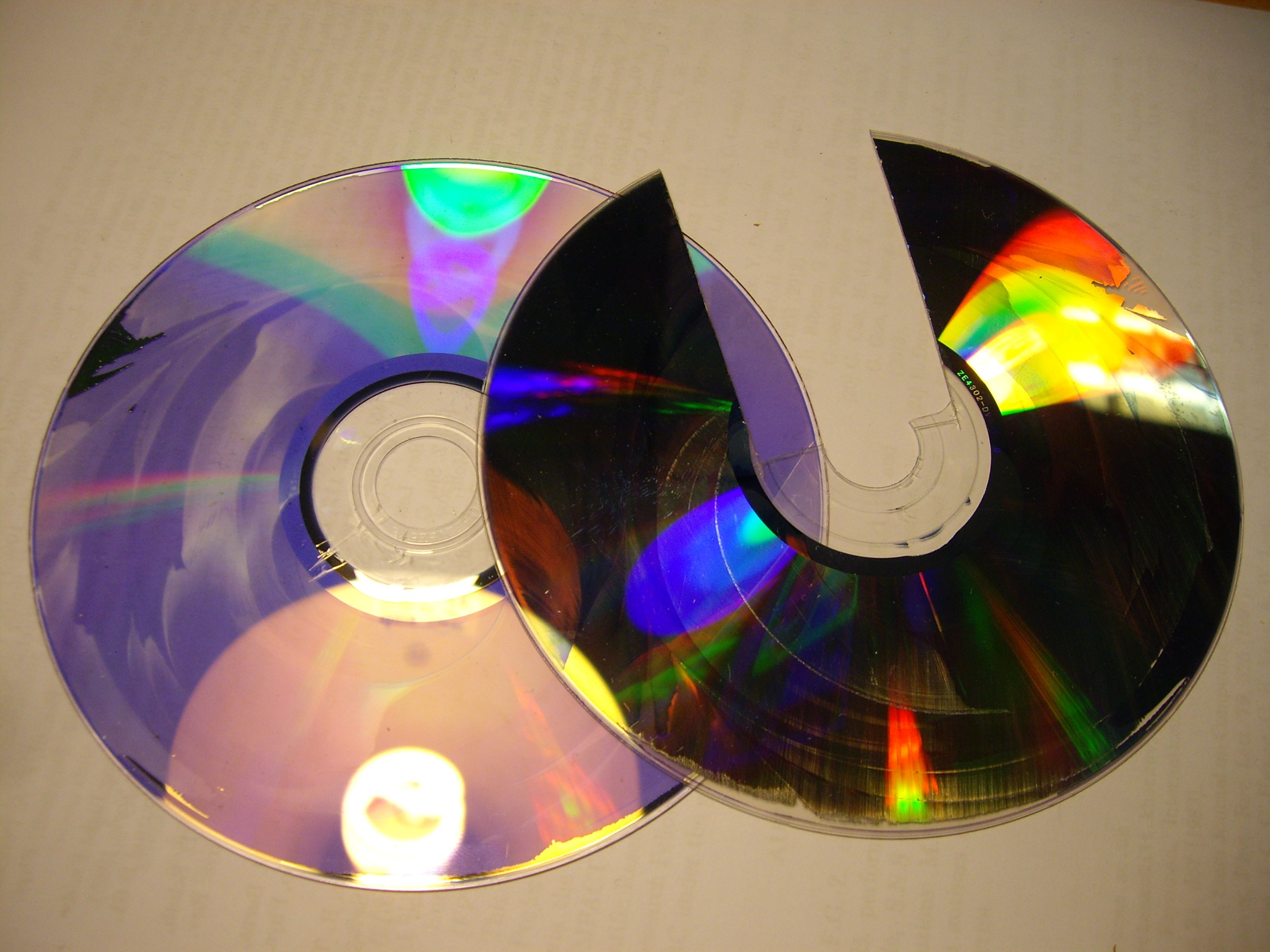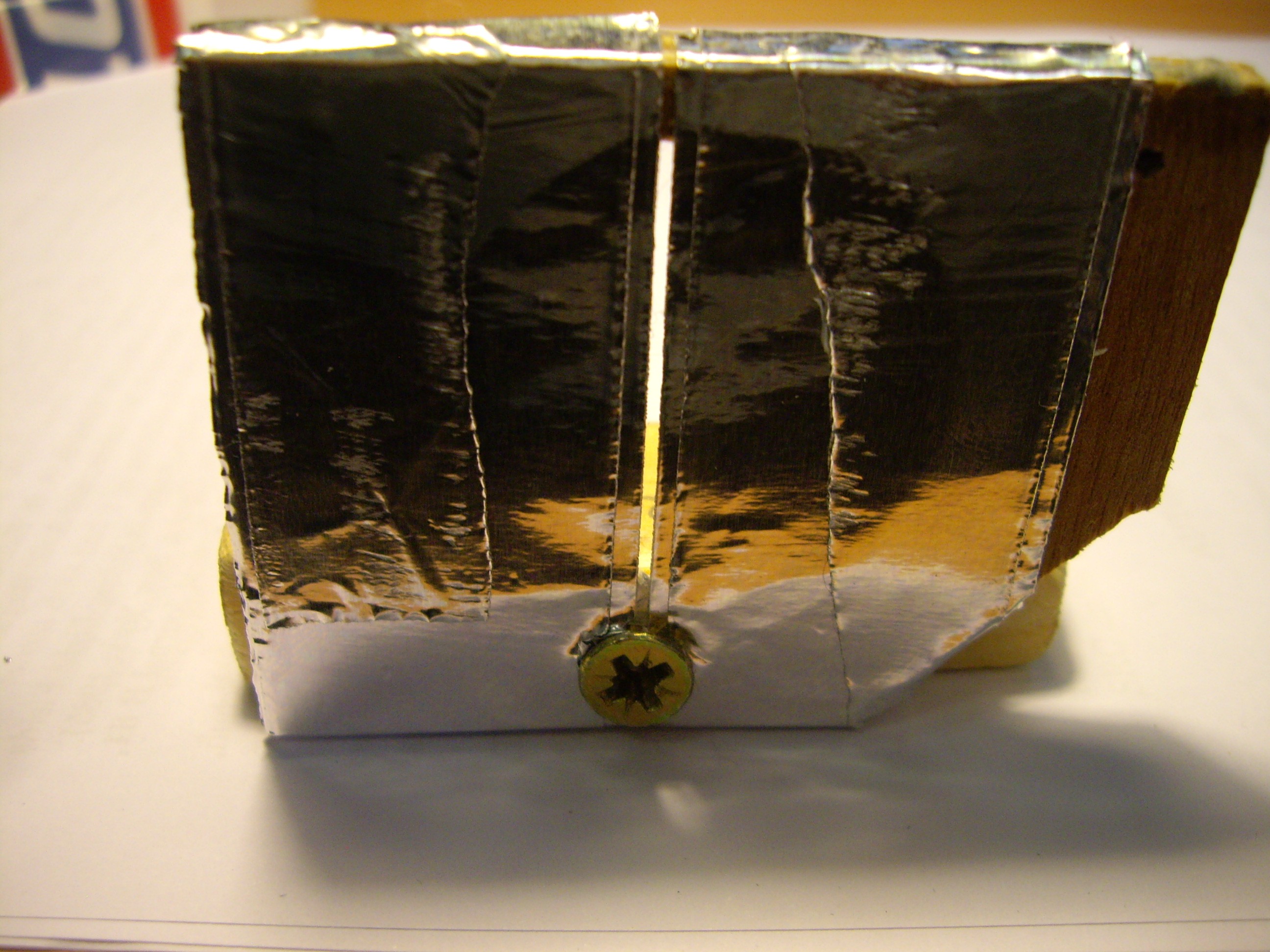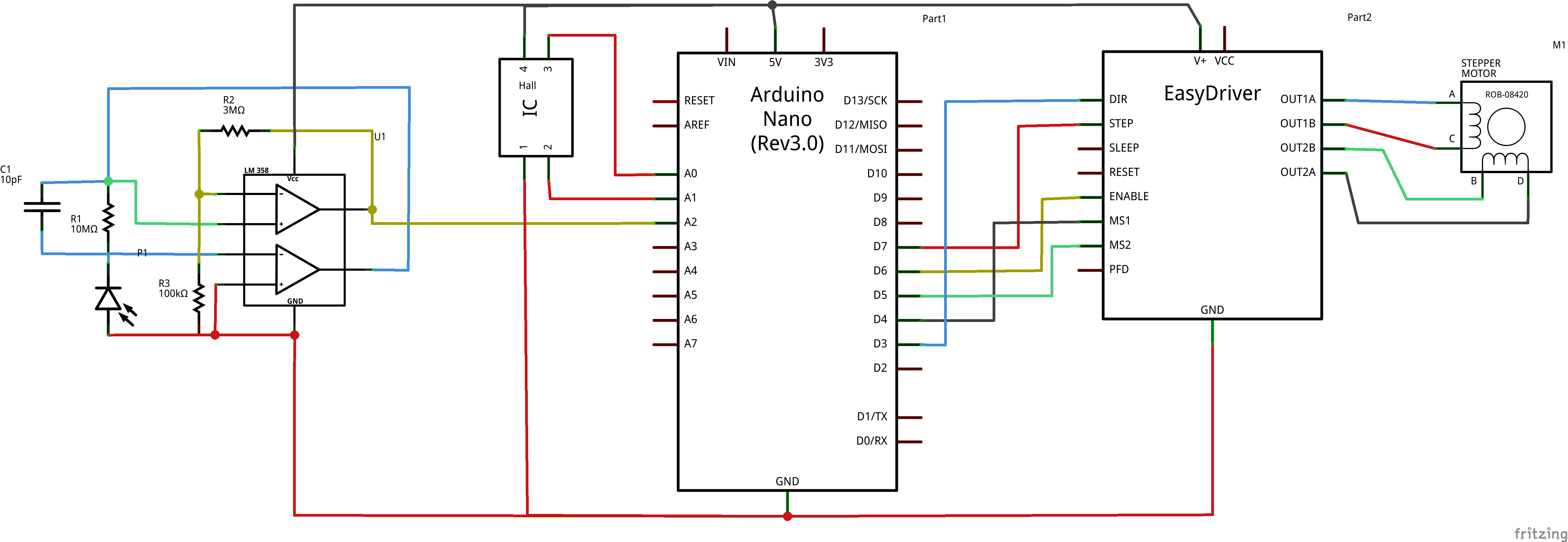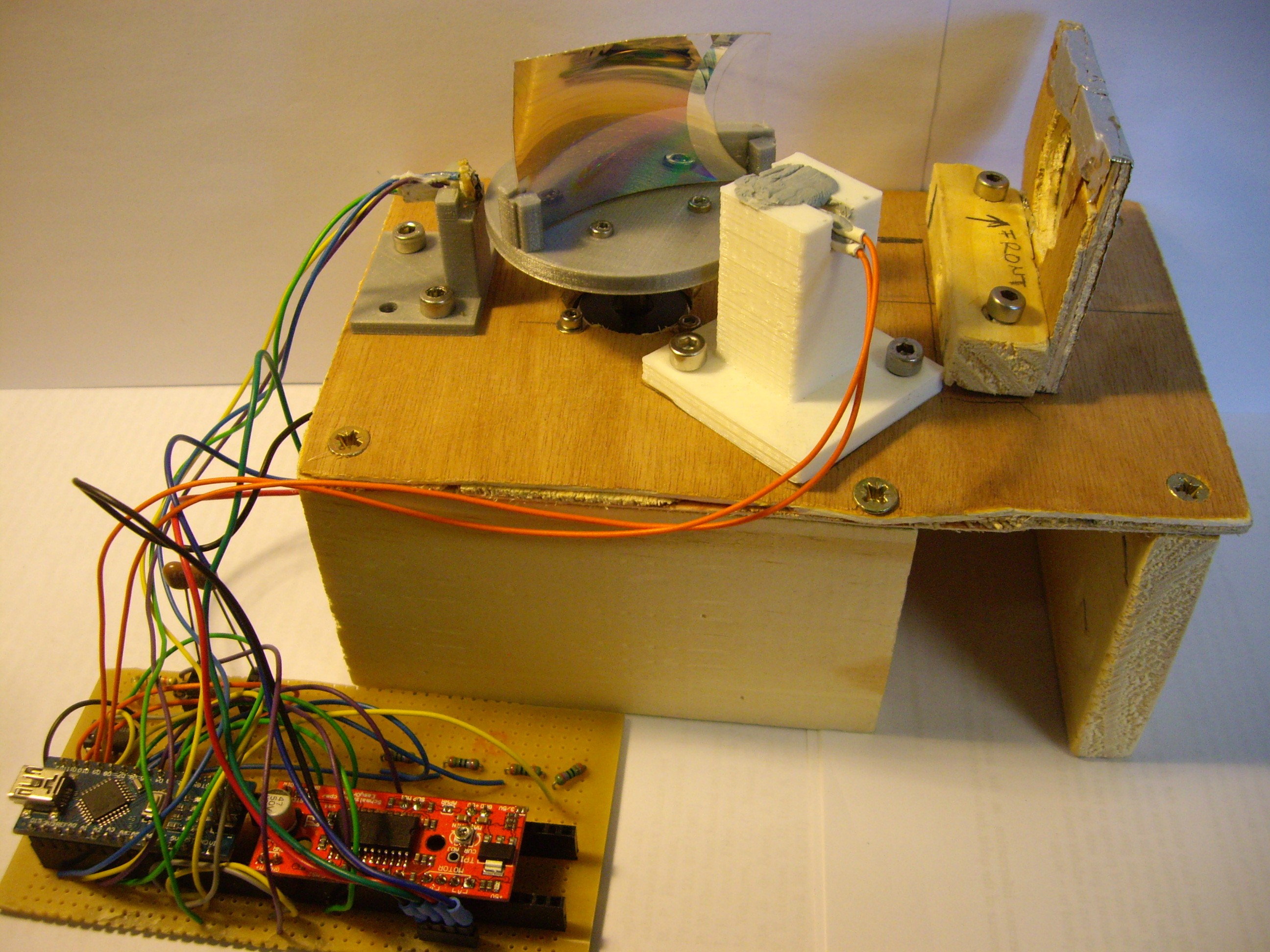-
1Step 1
The diffraction grating
Take your DVD and split it into its 2 layers using flat tweezers or a scalpel. One layer should be (mostly) shiny, the other transparent with a purple hue. Cut a nice rectangle out of the shiny part.
-
2Step 2
Print / fab grating mount, sensor holders
-
3Step 3
Entrance slit
The entrance slit for the light you want to examine can be made from 2 pieces of tin foil. Cut a large hole into a piece of wood/cardboard and tape the 2 pieces to it, leaving a small vertical gap.
-
4Step 4
Electronics
Wire Nano, Easy driver, stepper motor, Opamp, photodiode and optionally Hall sensor.
![]()
-
5Step 5
Assemble parts
-
6Step 6
Arduino Code
// Arduino code for THE SPINNING SPECTROMETER // // This code is released under the beerware license: As long as you // retain this notice you can do whatever you want with this stuff. If we // meet some day, and you think this stuff is worth it, you can buy me // a beer in return. // Andi //Definitions // // HALL SENSOR #define HallPin1 A0 #define HallPin2 A1 double a0; double a1; int HallMaxVal; int Threshold; int deltaHall; // // STEPPER via easydriver #define stp 7 #define dir 3 #define MS1 4 #define MS2 5 #define EN 6 // //PHOTODIODE #define photoPin A2 int photoRead; double photoVolt; int ArraySize; float integral = 0; unsigned long lastTimeSampled = 0; const float conversion = 5.0 / 1024 * 1e-6; void setup() { Serial.begin(19200); // //PHOTODIODE pinMode(photoPin, INPUT); // // HALL SENSOR pinMode(HallPin1, INPUT); pinMode(HallPin2, INPUT); // // MOTOR CONTROL // set digital i/o pins as outputs: pinMode(stp, OUTPUT); pinMode(dir, OUTPUT); pinMode(MS1, OUTPUT); pinMode(MS2, OUTPUT); pinMode(EN, OUTPUT); digitalWrite(dir, LOW); //Pull direction pin low to move "forward" digitalWrite(MS1, HIGH); //Pull MS1, and MS2 high to set logic to 1/8th microstep resolution digitalWrite(MS2, HIGH); // //ADC SETUP // Define different ADC prescaler const unsigned char PS_16 = (1 << ADPS2); const unsigned char PS_32 = (1 << ADPS2) | (1 << ADPS0); const unsigned char PS_64 = (1 << ADPS2) | (1 << ADPS1); const unsigned char PS_128 = (1 << ADPS2) | (1 << ADPS1) | (1 << ADPS0); // standard UNO prescaler, equals 125kHz // set up the ADC ADCSRA &= ~PS_128; // remove bits set by Arduino library // you can choose a prescaler from above. PS_16, PS_32, PS_64 or PS_128 ADCSRA |= PS_32; // PS_64~16.6 Sa/ms, PS_32~31.2 Sa/ms, PS_16~50 Sa/ms (=1MHz Sa.speed) // Serial.println("go"); } // // // void loop() { //loop gets user input then either a) finds & goes to home pos. b) goes to home // or c) measures, sends data, then goes back to home // measurement is over first 135degrees, i.e. 600 points ArraySize = 600; photoRead = 0; int photoArray[ArraySize]; int i; int k; int photoCount = 0; if (Serial.available() > 0) { int inByte = Serial.read(); // do something different depending on the character received. // The switch statement expects single number values for each case; // in this exmaple, though, you're using single quotes to tell // the controller to get the ASCII value for the character. For // example 'a' = 97, 'b' = 98, and so forth: switch (inByte) { // // HALL SENSOR + HOME POSITION case '1': HallMaxVal = HallMax(); // Serial.print("max value Hall sensor = "); // Serial.println(HallMaxVal); Threshold = int(0.95 * HallMaxVal); // Serial.print("Threshold set to "); // Serial.println(Threshold); delay(100); // got to home position GoToZeroPos(Threshold); break; // // HOME POSITION case '2': // got to home position GoToZeroPos(Threshold); break; // // MEASUREMENT + BACK TO HOME case '3': // Serial.println("case 3"); for (i = 0; i < 733; i++) { SmallStepMode(500); // turn 165deg } delay(500); //motor turns 60deg from home, i.e. 267 points recorded for (i = 0; i < ArraySize; i++) { digitalWrite(stp, HIGH); //Trigger one step forward // photoArray[photoCount] = analogRead(photoPin); // delay(2); // integral = 0; // integrate signal 300 times, i.e. 10ms // for(int i=0;i<150;i++){ // photoRead = analogRead(photoPin); // unsigned long now = micros(); // // integral += photoRead*(now - lastTimeSampled); // lastTimeSampled = now; // } // photoArray[photoCount] = integral*5/1024; photoRead = 0; for (int i = 0; i < 50; i++) { photoRead += analogRead(photoPin); delay(1); } photoArray[photoCount] = photoRead / 50; photoCount++; digitalWrite(stp, LOW); //Pull step pin low so it can be triggered again } // Serial.println("midway"); delay(500); photoArray[0] = 0; // always huge value?? //print results for the whole 90deg // Serial.println("results:"); for (k = 0; k < ArraySize; k++) { Serial.println(photoArray[k]); //Serial.print(","); //delay(2); } // Serial.println(""); // Serial.println("going back to start"); for (i = 0; i < 1600 - 733 - ArraySize; i++) { SmallStepMode(500); // go back to starting position } break; default: delay(100); // don't do anything } } } // loop end // // // // // ////////////////////////////////////// // FUNCTIONS // // //////////////////////////////////////////////////////////////////////////// // one 1/8th microstep foward mode function void SmallStepMode(int stepDelay) // inspired by the sparkfun easydriver code { digitalWrite(dir, LOW); //Pull direction pin low to move "forward" digitalWrite(MS1, HIGH); //Pull MS1, and MS2 high to set logic to 1/8th microstep resolution digitalWrite(MS2, HIGH); digitalWrite(stp, HIGH); //Trigger one step forward delayMicroseconds(stepDelay); digitalWrite(stp, LOW); //Pull step pin low so it can be triggered again delayMicroseconds(stepDelay); } // // //////////////////////////////////////////////////////////////////////////// // find Hall sensor max value -> threshold int HallMax() { int MaxVal; int read_old = 0; int read_new; int cnt = 0; digitalWrite(dir, LOW); //Pull direction pin low to move "forward" digitalWrite(MS1, HIGH); //Pull MS1, and MS2 high to set logic to 1/8th microstep resolution digitalWrite(MS2, HIGH); while (cnt < 1600) { // motor is microstepping 1/8th, so rotate 1 turn digitalWrite(stp, HIGH); //Trigger one step forward a0 = analogRead(A0); a1 = analogRead(A1); read_new = abs(a0 - a1); if (read_new > read_old) { read_old = read_new; } delayMicroseconds(470); // turn the stepper at 1ms per 1/8th step digitalWrite(stp, LOW); //Pull step pin low so it can be triggered again cnt++; } MaxVal = read_old; return MaxVal; } // // //////////////////////////////////////////////////////////////////////////// // go to zero, i.e. magnet=Hall sensor void GoToZeroPos(int val) { int HallDiff = abs(analogRead(A0) - analogRead(A1)); digitalWrite(dir, LOW); //Pull direction pin low to move "forward" digitalWrite(MS1, HIGH); //Pull MS1, and MS2 high to set logic to 1/8th microstep resolution digitalWrite(MS2, HIGH); while (HallDiff != val) { digitalWrite(stp, HIGH); //Trigger one 1/8th step forward delayMicroseconds(470); HallDiff = abs(analogRead(A0) - analogRead(A1)); digitalWrite(stp, LOW); } // Serial.println("position zero reached"); } // // //////////////////////////////////////////////////////////////////////////// //then use your favourite method to capture the serial data and plot the spectrum. Python works well for example.
The Spinning Spectrometer
A different take on the good 'ol spectrometer: spinning the grating to get visible light spectra. DIY style.
 andreas.betz
andreas.betz



Discussions
Become a Hackaday.io Member
Create an account to leave a comment. Already have an account? Log In.